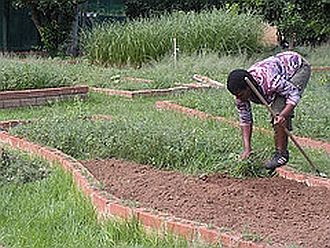
Publisher:
Bonnie King
CONTACT:
Newsroom@Salem-news.com
Advertising:
Adsales@Salem-news.com

~Truth~
~Justice~
~Peace~
TJP
Jul-06-2010 22:03

 TweetFollow @OregonNews
TweetFollow @OregonNews
Improving Farmer Livelihoods and Wildlife Conservation
Danielle Nierenberg for Salem-News.comThe latest good news from West Africa.
 In Botswana, the Mokolodi Wildlife Reserve helps draw the connection between the importance of environmentally sustainable agriculture practices and the conservation of wildlife. (Photo: Bernard Pollack |
(OUAGADOUGOU, Burkina Faso) - Earlier this month, we highlighted Nicholas Kristof’s op-ed in the New York Times about Gabon, a country in West-Central Africa where the rights of farmers are frequently in conflict with wildlife conservation efforts. One young village chief and farmer, Evelyn Kinga explained that she doesn’t like elephants because they eat her cassava plants—a crop her livelihood depends on—because she doesn’t benefit from rich foreigners who come to Gabon for eco-tourism.
But it doesn’t have to be this way, says Raoul du Toit, Director of the Rhino Conservation Trust in Zimbabwe. His organization works closely with farmers on the ground to help communities realize that protecting wildlife can be in their own best interest.
du Toit promotes “landscape-level planning” that takes into account the needs of wildlife, the environment, and farming communities. Rather than relying on development agencies and governments to decide where cattle fences should go or where farmers should plant their crops, local communities and stakeholders need to be part of the process. Development aid, says du Toit, should follow what local stakeholders need and perceive, not the other way around. Additionally, the Rhino Conservation Trust provides classroom materials for schools so that students may learn the connections between sustainable agriculture and wildlife conservation at an early age. (See also Helping Farmers Benefit Economically from Wildlife Conservation)
And du Toit is not alone in his effort to improve the lives of farmers, as well as protect wildlife.
In Tanzania, the Jane Goodall Instutite (JGI) started as a center to research and protect wild chimpanzee populations in what is now, thanks to their efforts, Gombe National Park. But by the early 1990’s the organization realized that in order to be successful it would have to start addressing the needs of the communities surrounding the park. JGI was planting trees to rebuild the forest but members of the community were chopping them down—not because they wanted to damage the work but because they needed them for fuel and to make charcoal.
In response, JGI started working with communities to develop government- mandated land use plans, helping them develop soil erosion prevention practices, agroforestry, and production of value-added products, such as coffee and palm oil. “These are services,” says Pancras Ngalason Executive Director of JGI Tanzania, “people require in order to appreciate the environment,” and that will ultimately help not only protect the chimps and other wildlife, but also to build healthy and economically viable communities. (See also: Rebuilding Roots in Environmental Education)
In Botswana, the Mokolodi Wildlife Reserve is doing more than just teaching students and the community about conserving and protecting wildlife and the environment, they’re also educating students about permaculture. By growing indigenous vegetables, recycling water for irrigation, and using organic fertilizers—including elephant dung—the Reserve’s Education Center is demonstrating how to grow nutritious food with very little water or chemical inputs.
When school groups come to learn about the animals, the reserve also teaches them about sustainable agriculture. Using the garden as a classroom in which to teach students about composting, intercropping, water harvesting, and organic agriculture practices, the Wildlife Reserve helps draw the connection between the importance of environmentally sustainable agriculture practices and the conservation of elephants, giraffes, impala, and various other animals and birds living in the area.(See also: Cultivating an Interest in Agriculture Conservation)
To read more about innovative ways to protect agriculture and the surrounding wildlife, read:
- From Alligator to Zebra: Wild Animals Find Sanctuary in the Lilongwe Wildlife Centre
- A Funny Thing Happened on the Way to Kigoma, Tanzania
- Protecting Wildlife While Improving Food Security, Health, and Livelihoods
- Helping Conserve Wildlife–and Agriculture–in Mozambique
- Honoring the Farmers that Nourish their Communities and the Planet
- Investing in Projects that Protect Both Agriculture and Wildlife
=====================================================================
Source: Nourishing the Planet
Articles for July 5, 2010 | Articles for July 6, 2010 | Articles for July 7, 2010

googlec507860f6901db00.html
Salem-News.com:



Terms of Service | Privacy Policy
All comments and messages are approved by people and self promotional links or unacceptable comments are denied.
[Return to Top]
©2025 Salem-News.com. All opinions expressed in this article are those of the author and do not necessarily reflect those of Salem-News.com.